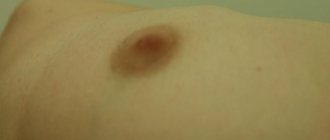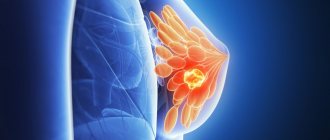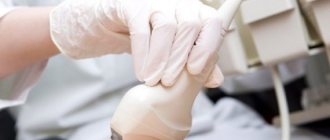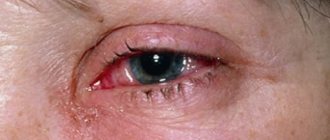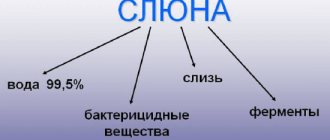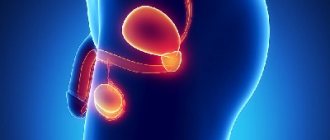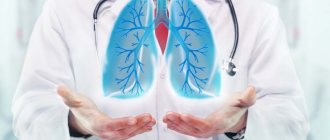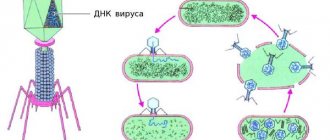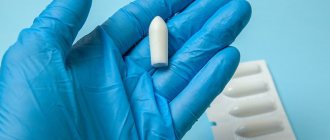Inflammation of the mammary glands, or mastitis, is predominantly a female disease that occurs between the ages of 16 and 35. Most often, breastfeeding is diagnosed in nursing mothers. A specific form develops in women and men, regardless of lactation.
In addition to the deterioration of well-being and “milk loss,” the risk of abscess and tissue necrosis increases, which sometimes cannot be stopped even with surgery. This is why self-medication is not recommended for mastitis. Timely contact with a doctor will allow you to stop the infectious infection before the onset of a critical condition.
Inflammation of the mammary gland: general questions
Mastitis is a nonspecific inflammation of breast tissue, mainly associated with childbirth and lactation, or with mastopathy (non-lactation mastitis). Mastitis is rarely chronic; it is usually an acute disease.
Causes of inflammation of the mammary gland:
- milk stagnation
- incomplete emptying of the gland during feeding
- cracked nipples
- improper attachment to the breast
- poor hygiene
- secretion stagnation
- calcifications in the ducts
Causes of inflammation of the mammary glands
The inflammatory process of mastitis occurs as a result of infection caused by Staphylococcus aureus. Less commonly, infection occurs from the influence of an association of microorganisms that are normally part of healthy microflora, for example, Staphylococcus aureus and Escherichia coli.
The source of infection is hidden bacteria carriers. These can be people with whom the woman in labor comes into contact in the first days after birth (medical staff, roommates, relatives) or a baby infected in utero.
Contact with a bacteria carrier does not always clearly lead to infectious infection. Favorable conditions are necessary for its development:
- Local – defects of the nipple and breast caused by mastopathy, operations to remove tumors in the mammary gland. At risk are “firstborns” whose nipples are underdeveloped and “not developed” when feeding previous children; due to physiological imperfections, milk does not pass well through the milk ducts and stagnates in them.
- Systemic – difficult pregnancy and childbirth, the presence of chronic diseases.
Approximately 85% of women in labor develop mastitis due to stagnation of milk, 15% due to cracked nipples. In both cases, when feeding the child, the woman experiences severe pain, so she avoids pumping, thereby provoking a decrease in activity and inflammation of the mammary gland lobules.
The cause of non-lactation mastitis is also staphylococcus, but the infectious process starts only when at least two factors are combined - decreased immunity and the appearance of a “gate” for bacteria to enter, for example, microcracks in the skin of the chest formed as a result of injury, burn, at the site of a boil.
Symptoms of mastitis
Signs of inflammation of the mammary gland are classic: pain, redness, swelling, fever, dysfunction.
- engorgement, swelling
- skin redness
- bursting pain
- infiltrate
- pus in milk
- skin changes such as gangrene, infiltration
Inflammation is usually associated with a violation of the patency of the ducts and the addition of a secondary infection, which travels from the nipple into the gland tissue through the milk ducts and lymphatic vessels. With a normal level of immunity, the process is limited by a capsule, an abscess is formed, with immunodeficiency, pus spreads through the tissues - the phlegmonous form.
Classification of the disease
There are 2 types of mastitis:
- Lactational.
- Non-lactational (fibrocystic).
It occurs in the postpartum period as a result of infection entering the mammary gland - through microtraumas on the nipples and skin. In 90% of cases it occurs in an acute form. The main risk group is first-time mothers.
It develops due to hormonal disorders, low immunity, some chronic diseases, for example, radiculitis of the thoracic region, and previous viral infections. It is characterized by a less acute course, but more often becomes chronic.
Only in 10% of women the inflammatory process is activated in both mammary glands. It mainly affects one breast, more often the right one.
Stages of the disease
Serous (initial stage) - redness of the skin is noticeable, while the focus of inflammation does not have clear boundaries, the temperature rises.
Infiltrative - an accumulation of cells mixed with blood and lymph form a clearly palpable compaction. It is diagnosed in more than 50% of cases, because, having endured or not noticing the initial stage of mastitis, a woman decides to see a doctor. The appearance of infiltration is a borderline condition, when it is still possible to be cured with medication.
Purulent - the formation of one or more cavities filled with pus. In 80% of cases it is diagnosed at 2-3 weeks of lactation. If the abscess is not opened and drained in time, the infant will acquire a complex destructive form:
- phlegmonous, when inflammation penetrates the subcutaneous fat and covers more than 3 quadrants of the chest. In this case, the general condition sharply worsens, convulsions and loss of consciousness are possible;
- gangrenous, in which pus permeates not only the breast tissue, causing their necrosis, but also enters the blood and lymphatic vessels. As a result, the risk of blood clots and the development of toxic shock increases - factors leading to death.
Diagnosis of inflammation of the mammary gland (mastitis)
Typically, mastitis is quite easily diagnosed by the patient herself, but it is still worth contacting a specialist. At the I. Medvedev Medical Center, appointments and emergency care are provided 363 days a year, and treatment focuses on minimally invasive and conservative techniques.
If a patient has pain in the mammary glands, treatment begins with diagnosis. It includes:
- inspection and palpation
- Ultrasound of the mammary glands
- if necessary, puncture with histology of the punctate contents
Symptoms of breastfeeding
How to recognize the first signs of purulent inflammation? What symptoms should not be ignored?
| Stage | Symptoms |
| Serous | Most women consult a doctor at the stage of infiltration formation, when urgent measures have to be taken to “disinfect” the milk ducts. This is because they mistake the initial form of inflammation of the mammary glands for lactostasis (milk stagnation). The main sign of a purulent process is a deterioration in the general condition - increased body temperature (up to 37 degrees) or sharp jumps up to 39 degrees, weakness for 2 days. If there are no such symptoms, the breasts have become dense and painful, but when feeding, milk flows easily; to eliminate lactostasis, it is enough to express more often. |
| Infiltrative | Due to the formation of a compaction without clear boundaries, the mammary gland enlarges, but the skin remains unchanged. The temperature usually rises to 38 degrees. Lasts for 4-5 days. |
| The appearance of signs of intoxication: temperature 39-40 degrees, headache, insomnia. The breasts become dense, the skin turns red, veins appear, and inflammation of the lymph nodes of the mammary gland is noticeable. | |
| Abscess/gangrene | The abscess process is characterized by a sensation of overflowing fluid in the area of infiltration. With gangrenous purulent inflammation, blisters appear on the skin and tissue necrosis is noticeable. Blood pressure drops, pulse increases. |
Treatment
At first, when mastitis is not yet purulent, but serous, you can get by with cold compresses, frequent pumping (or feeding), and antibiotics if the inflammation lasts longer than a day. In this case, penicillins, including inhibitor-protected ones, are preferred. When a woman experiences inflammation of the mammary gland, treatment differs depending on the stage of the process.
If an abscess has already formed, there is no point in prolonging it. Puncture of the abscess under ultrasound control can resolve the process conservatively; if not, then it is necessary to perform resection of the segment of the gland in which the abscess lies, with drainage of the cavity.
As for breastfeeding, it is contraindicated if there is pus in the milk; if not, then no restrictions are imposed.
Mastitis
At the slightest suspicion of the development of inflammation in the mammary gland, it is necessary to urgently consult a mammologist, since in the treatment of this disease it is very important to timely identify and immediately take measures to eliminate the cause of mastitis and suppress the infectious process. Self-medication or delay in contacting a specialist is unacceptable, since inflammation of the mammary gland is prone to progression, the formation of suppuration and abscess formation. In case of development of purulent mastitis, surgical treatment is necessary.
If mastitis is detected at the stage of serous inflammation or infiltration, conservative treatment of mastitis is carried out. Antibiotic therapy is prescribed using potent broad-spectrum agents. Serous mastitis, as a rule, goes away in 2-3 days; it may take up to 7 days for the infiltrate to resolve. If inflammation is accompanied by severe general intoxication, detoxification measures are carried out (infusion of electrolyte solutions, glucose). In case of severe excess lactation, drugs are prescribed to suppress it.
Purulent forms of mastitis usually require surgical intervention. A developed breast abscess is an indication for emergency surgical sanitation: opening the mastitis and draining the purulent focus.
Progressive mastitis, regardless of its stage, is a contraindication to further feeding (including healthy breasts), since breast milk is usually infected and contains toxic tissue breakdown products. For a child, pathologically altered breast milk can cause the development of dysbiosis and disorders of the functional state of the digestive system. Since treatment for mastitis includes antibiotics, feeding during this period is also not safe for the baby. Antibiotics can significantly damage the normal development and growth of organs and tissues. During the treatment of mastitis, you can express milk, pasteurize it and only then give it to the child.
Indications for suppression of lactation: lack of dynamics in serous and infiltrative mastitis within three days of antibiotic therapy, development of a purulent form, concentration of an inflammatory focus directly under the nipple, a history of purulent mastitis in the mother, concomitant pathologies of organs and systems that significantly worsen the general well-being of the mother.
Breast inflammation and hyperplasia
Dyshormonal processes, with a predominance of estrogen, also cause pain and discomfort in the gland, but, unlike mastitis, this is a non-inflammatory process. Treatment for breast hyperplasia is fundamentally different from mastitis; here hormonal therapy comes to the fore. Hyperplasia is the proliferation of gland tissue with the formation of cysts, cell swelling, and discharge from the nipple. It refers to mastopathy, fibroadenoma and adenomas.
Increased synthesis of prolactin plays a major role in this disease, so drugs that suppress its production, including herbal medicine, are widely used. Abraham tree - twig - stimulates the synthesis of dopamine, which reduces the production of prolactin; this component is contained in the herbal medicine Mastodinon.
Focal single formations can be removed surgically, by sectoral or atypical resection along with a block of adjacent tissue. Economical resection is carried out at the I. Medvedev Medical Center with a good cosmetic effect, so the patient does not have to worry about the aesthetics of appearance and the outcome of the disease.
Treatment of inflammation of the mammary glands
Mastitis in the first two stages responds well to conservative treatment. In this case, the woman does not even have to stop breastfeeding. Doctors recommend stopping breastfeeding only during antibacterial therapy, and only in cases where the drug can harm the baby.
It is strictly forbidden to self-medicate, since the transition from a relatively safe to a life-threatening state takes no more than 4-5 days. In destructive forms, as well as in specific mastitis, surgical intervention is required, the consequences of which are cessation of lactation and scars on the chest.
The use of folk remedies does not provide a 100% guarantee of relieving inflammation of the mammary gland. You need to contact a mammologist as soon as possible and undergo an ultrasound to determine the stage of the inflammatory process and select the optimal treatment tactics.

